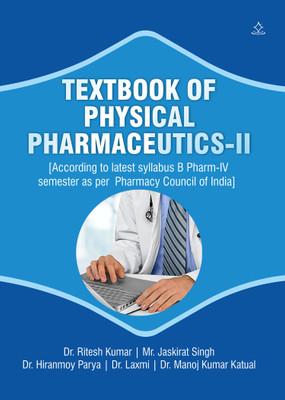TEXT BOOK OF PHYSICAL PHARMACEUTICS-II - According to latest syllabus B Pharm-IV semester as per Pharmacy Council of India(Paperback, Dr. Ritesh Kumar, Dr. Jashanjit Singh, Dr. Hiranmoy Parya, Laxmi, Dr. Manoj Kumar Katual)
Quick Overview
Product Price Comparison
The Textbook of Physical Pharmaceutics-II is a comprehensive academic resource designed to provide pharmacy students with an in-depth understanding of the physical principles that govern drug formulation and delivery. It covers a wide range of topics fundamental to pharmaceutical sciences, starting with colloidal dispersions, including their classification, particle size, shape, and the various propertiesŌĆöoptical, kinetic, and electricalŌĆöthat influences their behavior. The book explores the impact of phenomena such as coacervation, peptization, and the protective action of colloids, which are critical in advanced drug delivery systems. Rheology, a key chapter, delves into the flow characteristics of pharmaceutical materials, comparing Newtonian and Non-Newtonian systems, and addressing complex behaviors such as pseudoplasticity, dilatancy, plastic flow, and thixotropy, with practical methods to measure viscosity. Deformation of solids is also discussed, focusing on stress, strain, and the Heckel equation, which are important in tablet compression. The coarse dispersion section explains the formulation, stability, and rheology of suspensions and emulsions, emphasizing the theories of emulsification and the HLB method. Micromeretics introduces students to particle size analysis, surface area determination, porosity, and flow propertiesŌĆöall essential in designing efficient dosage forms. Drug stability, a crucial area, is addressed through detailed explanations of reaction kinetics, including zero, first, and second-order reactions. It also highlights factors affecting drug degradation such as temperature, pH, and light, and includes strategies for stabilization and accelerated stability testing. The book integrates theoretical concepts with practical applications, offering simple numerical problems to reinforce learning. With its structured approach and detailed content, this textbook serves as a valuable guide for mastering the physical principles in pharmaceutical sciences and preparing students for both academic success and industry readiness.

